English Version
Hello friends of the Pinmapple community. This time I want to share with you pictures and the history of the San Francisco de Asís square, one of the most emblematic places in Havana, very frequented by tourists and Cubans. In this post we will make a virtual tour where we will synthesize the history of the architectural and sculptural elements that make up the square. I hope you like it.
This beautiful square is located in the heart of the historical centre of the city. It is one of the main squares in Havana and has been witness to the passing of time and the evolution of Cuban history and culture. It was founded in the 16th century and during the 18th and 19th centuries, it became the commercial centre of the city, taking advantage of its location near the bay. It was from here that ships carrying goods between Cuba and Spain arrived and set sail. The name of the square derives from the Basílica Menor del Convento de San Francisco de Asís built in 1628, which borders the square to the south; this church is a majestic example of the Cuban baroque style. This ecclesiastical work was built by Fray Juan Romero and its bell tower with a height of 42 metres became the highest of the time. It also constituted the main exponent of the Franciscan Order in America, whose objective was the evangelization of the American peoples.
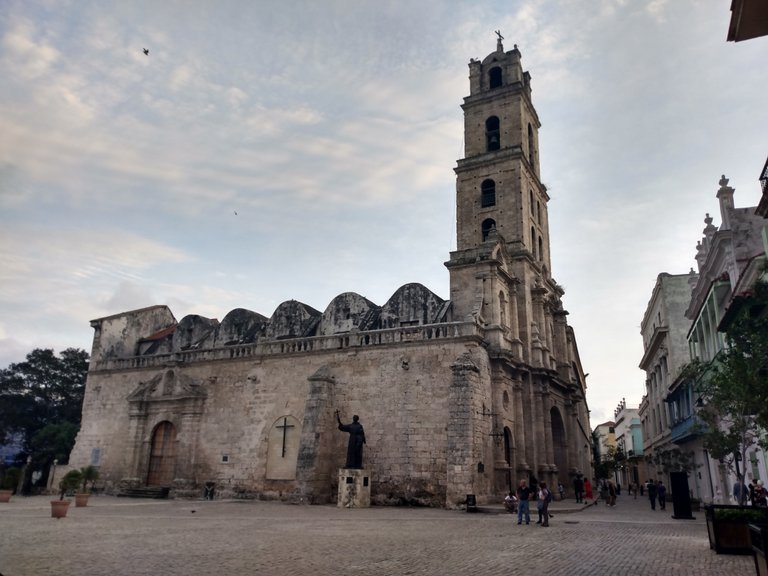
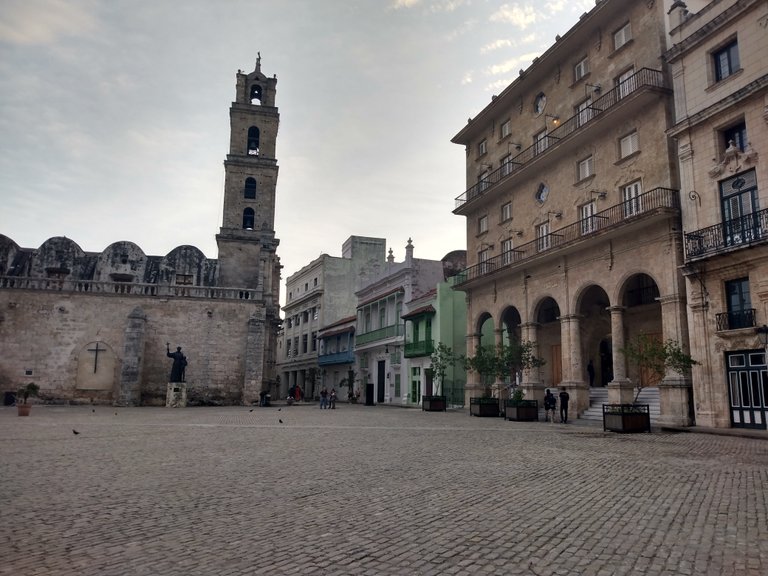
Right next to the Basilica is a bronze sculpture showing a friar holding a child by the hand. This work of art represents Fray Junipero Serra, a Franciscan friar who was a doctor in philosophical sciences and theology, evangelist par excellence and creator of several religious missions.
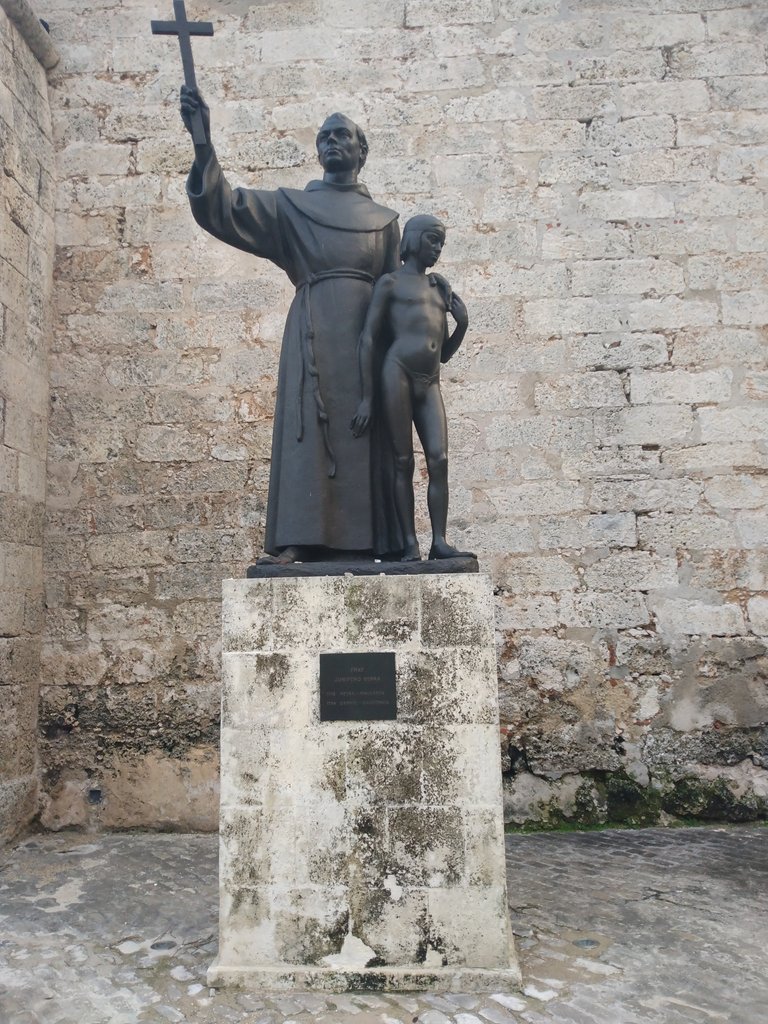
On the pedestal of the statue there is a carved bronze plaque with the date of the friar's birth and death.
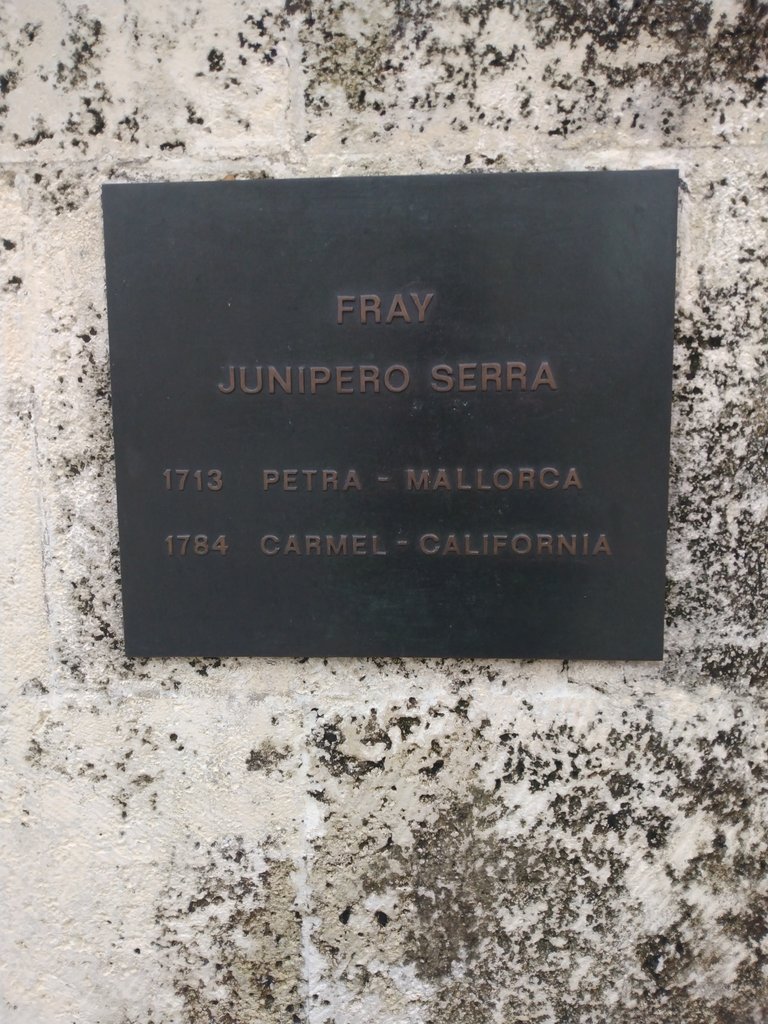
At the entrance of the aforementioned Basilica of the Convent of San Francisco de Asis, a peculiar sculpture in honour of the famous character known as ''The Knight of Paris'' welcomes the passer-by. It is one of the most popular sculptures among visitors, both Cubans and foreigners, who visit the site where some commonly touch his beard or his hand, to such an extent that these parts are polished by the frequent rubbing with their hands. The name of ''The Gentleman from Paris'' was José María López Lledín, of Spanish origin, who arrived in Cuba before he was 15 years old. It is said that he went mad and became ''El Caballero'' when he was condemned for a crime he had not committed and imprisoned in the Castillo del Príncipe in Havana for some 30 years. When he left prison he began to wander the streets of the city, presenting a dishevelled appearance, wearing a black suit all the time and carrying a folder full of papers and a bag with his belongings. However, despite his psychological condition, he was a very cordial person who liked to talk about any subject, only accepting money from people he knew and giving away a card that he coloured himself or the end of a pen or pencil, a pencil sharpener or other similar object. In 1977 he was admitted to a psychiatric hospital where he was diagnosed with paraphrenia. He died on 11 July 1985.
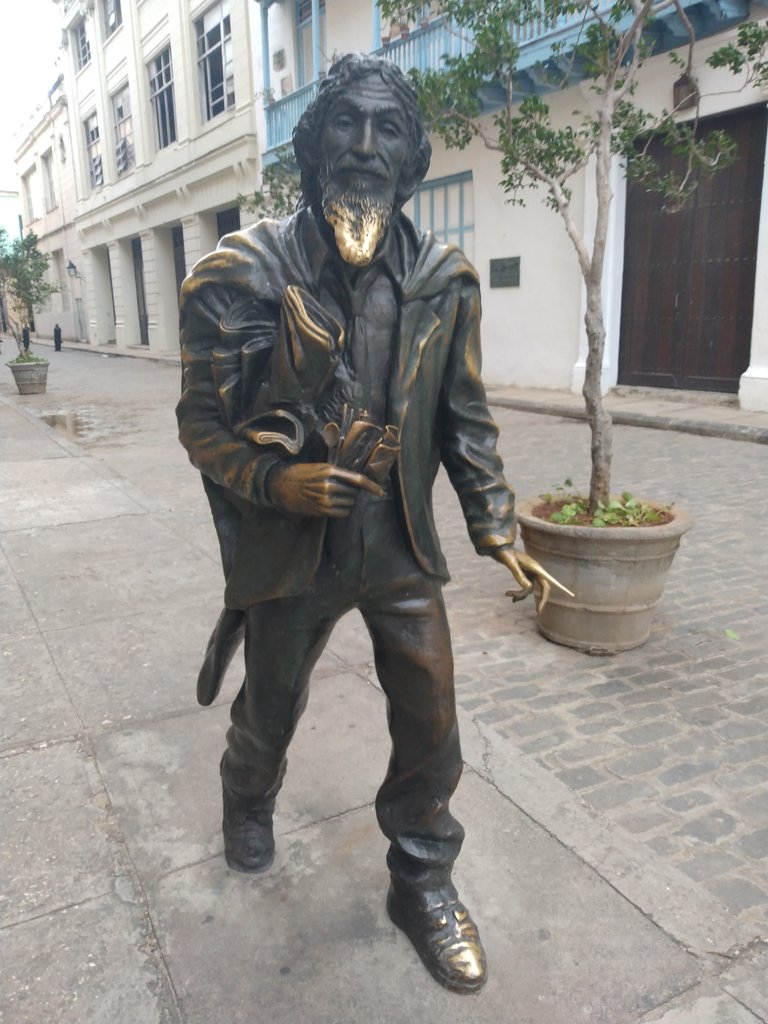
The northern boundary of the square is limited by one of the most relevant architectural works of the historic centre, the majestic building of the Lonja del Comercio (Commerce Exchange) which is an imposing architectural work of Renaissance style made up of six floors and a large dome on its roof topped with a bronze sculpture of the God Mercury. Founded in 1909, it is considered one of the most important architectural projects of the 20th century in Havana. Its function has been that of a trading centre or stock exchange in response to the growing commercial activity in the city at the beginning of the last century.
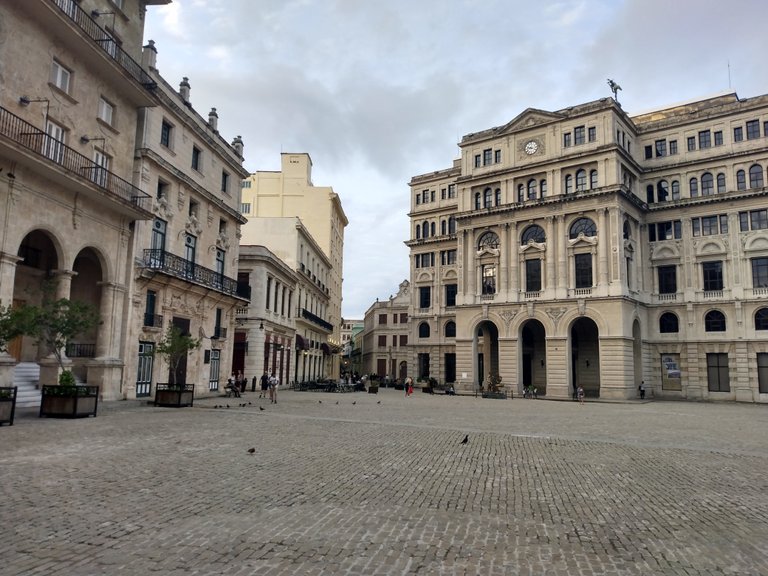
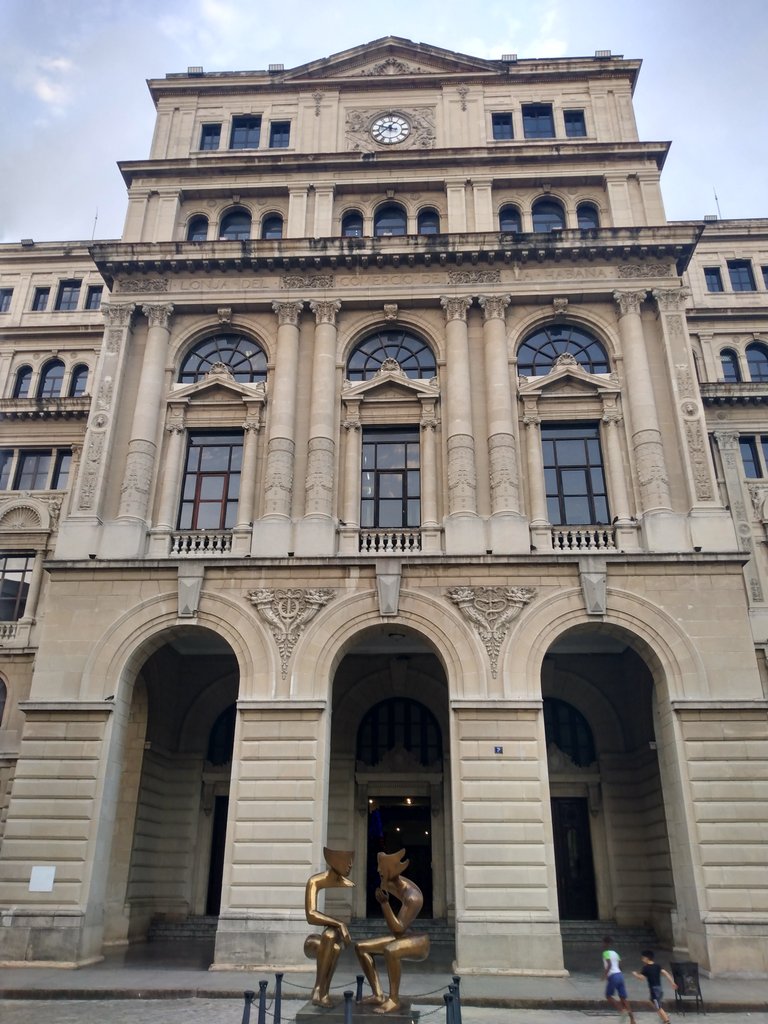
In front of the entrance to the Lonja del Comercio is a striking bronze sculpture entitled ''Etienne'' (in English ''The Conversation'') designed by the French sculptor Etiene Pirot and inaugurated in 2012. The work presents an abstract style where, it represents two people conversing in a frank exchange of ideas, staging friendship and the value of dialogue to treasure and strengthen relations between peoples.
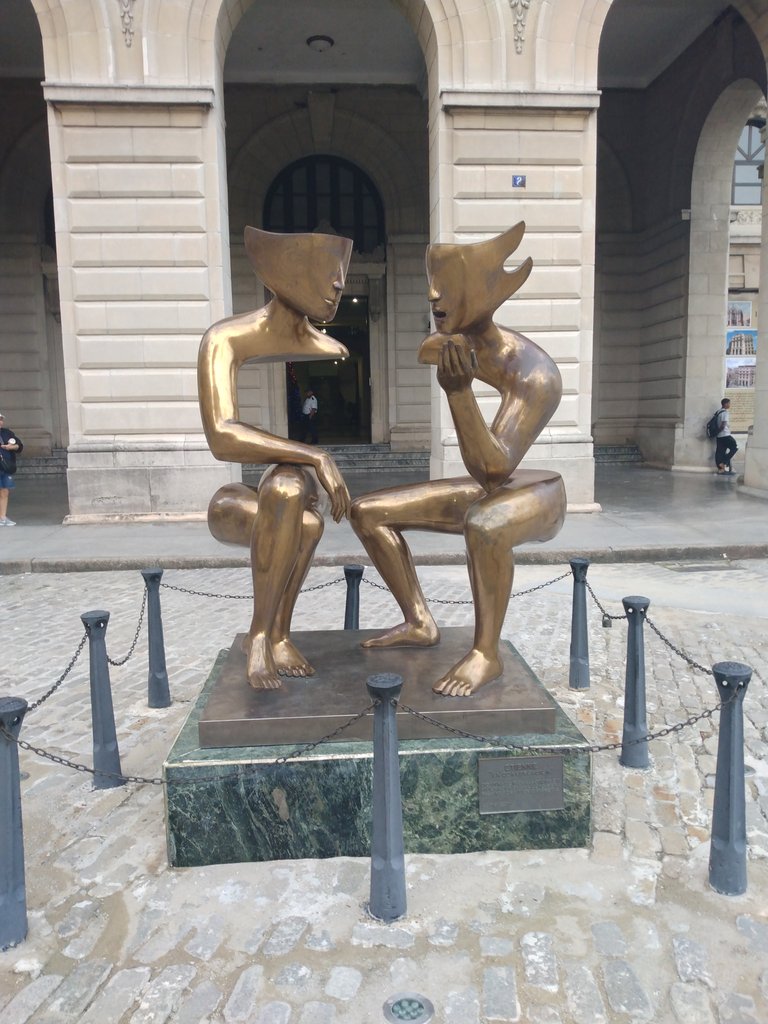
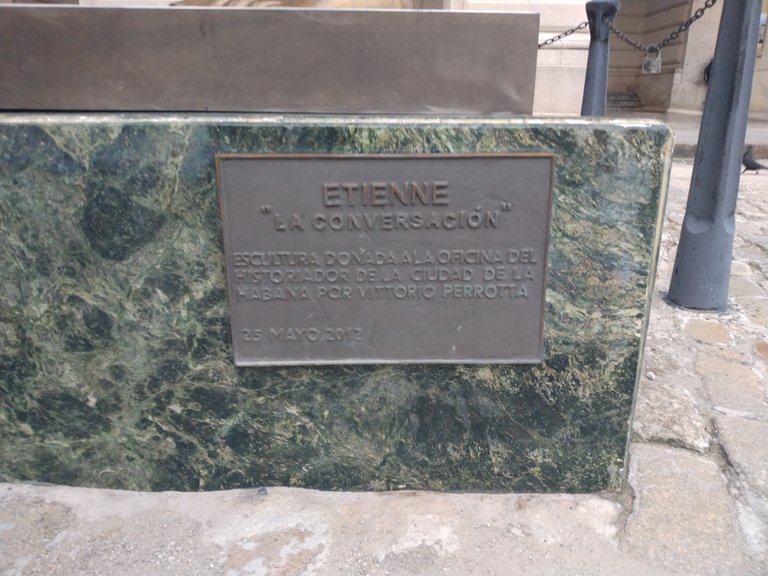
Finally, almost in the centre of the square we find the ''fountain of the lions'', one of the most beautiful and symbolic fountains in Havana. It was carved in Carrara marble by the Italian artist Giuseppe Gaggini in 1836. It is made up of four pedestals with symbolic bas-reliefs that support four lying lions; in the centre of the fountain is a column 1.5 metres high and 0.45 metres in diameter with a corolla on its top from which water flows from the octagonal pool at its base. The sculpture was donated to the city by the Intendant Conde de Villanueva.
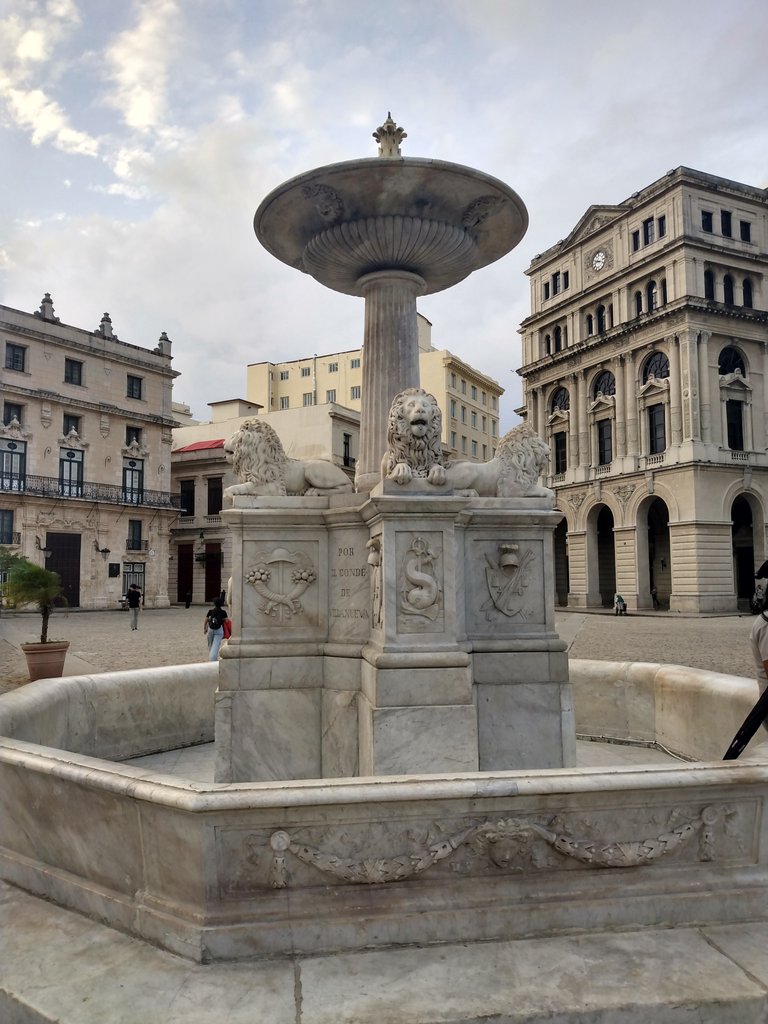
Nowadays, the square is a meeting place for foreign visitors and locals alike. It is also the starting point to tour the historic centre and enjoy admiring the Cuban architecture and culture. If you ever visit Havana, don't miss the opportunity to go to the Plaza de San Francisco de Asís.
All images are my property, taken with my MOTO G PLAY (2021) cell phone.
Translated at DeepL
Versión en Español
Hola. Saludos amigos de la comunidad Pinmapple. En esta ocasión les quiero compartir fotografías y la historia de la plaza San Francisco de Asís, uno de los sitios más emblemáticos de la Habana, muy frecuentado por turistas y cubanos. En este post haremos un recorrido virtual donde conoceremos sintetizadamente la historia de los elementos arquitectónicos y escultóricos que componen la plaza. Espero les guste.
Esta bella plaza se encuentra ubicada en el mismo corazón del casco histórico de la ciudad. Constituye una de las principales plazas de la Habana y ha sido testigo del devenir del tiempo y evolución de la historia y cultura cubana. Fue fundada en el siglo XVI y durante los siglos XVIII y XIX, se convirtió en el centro comercial de la ciudad aprovechando su ubicación cercana a la bahía. Desde ella llegaban y zarpaban embarcaciones que transportaban mercancías entre Cuba y España. El nombre de la plaza deriva de la Basílica Menor del Convento de San Francisco de Asís construida en 1628 la cual, limita por el Sur a la plaza; esta iglesia constituye un majestuoso ejemplo del estilo barroco cubano. Esta obra eclesiástica fue construida por Fray Juan Romero y su torre campanario con una altura de 42 m llegó a ser la más alta de la época, además constituyó el principal exponente de la Órden Franciscana en América, quienes tenían como objetivo la evangelización de los pueblos americanos.
Justo al lado de la Basílica se encuentra una escultura en bronce que muestra un fraile con un niño tomado de la mano. Esta obra de arte representa a Fray Junípero Serra un fraile franciscano quien fue doctor en ciencias filosóficas y Teología, evangelista por excelencia creador de varias misiones religiosas.
En el pedestal de la estatua se presenta una tarja tallada en bronce donde se plasma la fecha de nacimiento y fallecimiento del fraile.
A la entrada de la ya mencionada Basílica del Convento de San Francisco de Asís le da la bienvenida al transeúnte una peculiar escultura en honor al afamado personaje conocido como ´´El Caballero de París´´. Constituye una de las esculturas que goza de mayor popularidad entre los visitantes tantos cubanos como foráneos que recorren el sitio donde comúnmente unos le tocan la barba o la mano, a tal punto que esas partes se encuentran pulidas por el roce frecuente con las manos. ´´El Caballero de París´´ se llamaba José María López Lledín de procedencia española llegó a Cuba sin haber cumplido 15 años de edad. Se comenta que se volvió loco y se convirtió en ´´El Caballero´´ cuando fue condenado por un crímen que no había cometido y encarcelado en el Castillo del Príncipe en La Habana durante unos 30 años, a su salida de prisión comenzó a deambular por las calles de la ciudad, presentando un aspecto desaliñado, vestía todo el tiempo un traje negro y cargaba una carpeta llena de papeles y una bolsa con sus pertenencias. Sin embargo, a pesar de su condición psicológica era una persona muy cordial que gustaba hablar de cualquier tema, solo aceptaba dinero de las personas conocidas y a su vez regalaba una tarjeta que el mismo coloreaba o el cabo de una pluma o lápiz, un sacapuntas u otro objeto similar. En 1977 fue ingresado en un hospital psiquiátrico donde fue diagnósticado con parafrenia. Murió el 11 de julio de 1985.
El límite norte de la plaza se encuentra limitado por una de las obras de arquitectura más relevantes del casco histórico, el majestuoso edificio de la Lonja del Comercio el cual, constituye una imponente obra arquitectónica de estilo renacentista constituida por seis plantas y una gran cúpula en su techo rematada con una escultura en bronce del Dios Mercurio. Fundada en el año 1909 es considerada uno de los proyectos arquitectónicos más importantes del siglo XX en La Habana. Su función ha sido la de centro de contratación o bolsa de comercio como respuesta a la creciente actividad comercial en la ciudad a inicios del siglo pasado.
Frente a la entrada de la Lonja del Comercio se encuentra una escultura en bronce muy llamativa titulada ´´Etienne´´ (En español ´´La Conversación´´) diseñada por el escultor francés Etiene Pirot e inaugurada en el 2012. La obra presenta un estilo abstracto donde, representa a dos personas conversando en una franca posición de intercambio de ideas, escenificando la amistad y el valor del diálogo para atesorar y robustecer las relaciones entre los pueblos.
Por último, casi en el centro de la plaza nos encontramos con ´´la fuente de los leones´´ una de las más hermosas y simbólicas de La Habana. Fue tallada en mármol de Carrara por el artista italiano Giuseppe Gaggini en el año 1836. Está constituida por cuatro pedestales con bajorrelieves simbólicos que soportan cuatro leones acostados; en el centro de la fuente se encuentra una columna de 1,5 metros de atura y 0,45 de diámetro con una corola en su cima de la cual fluye el agua proveniente del estanque octogonal en su base. La obra escultórica fue donada a la ciudad por el intendente Conde de Villanueva.
Actualmente, la plaza constituye un sitio de encuentro para visitantes foráneos y lugareños. Además, resulta ser el punto de partida para recorrer el casco histórico y deleitarse admirando la arquitectura y cultura cubana. Si en algún momento visita La Habana, no pierda la oportunidad de ir a la Plaza de San Francisco de Asís.
Todas las imágenes son de mi propiedad, tomadas con mi teléfono móvil MOTO G PLAY (2021).
Traducido en DeepL



